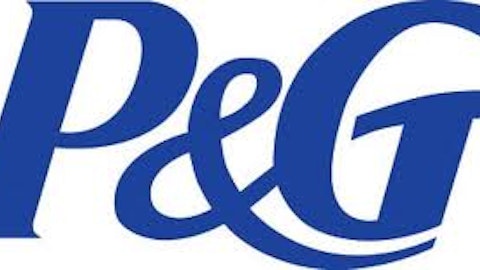We’d all like to invest like the legendary Warren Buffett, turning thousands into millions or more. Buffett analyzes companies by calculating return on invested capital, or ROIC, to help determine whether a company has an economic moat — the ability to earn returns on its money above that money’s cost.
In this series, we examine several companies in a single industry to determine their ROIC. Let’s look at The Procter & Gamble Company (NYSE:PG) and three of its industry peers, to see how efficiently they use cash.
Of course, it’s not the only metric in value investing, but ROIC may be the most important one. By determining a company’s ROIC, you can see how well it’s using the cash you entrust to it and whether it’s actually creating value for you. Simply put, it divides a company’s operating profit by how much investment it took to get that profit. The formula is:
ROIC = net operating profit after taxes / Invested capital
(Get further detail on the nuances of the formula.)
This one-size-fits-all calculation cuts out many of the legal accounting tricks (such as excessive debt) that managers use to boost earnings numbers, and it provides you with an apples-to-apples way to evaluate businesses, even across industries. The higher the ROIC, the more efficiently the company uses capital.
Ultimately, we’re looking for companies that can invest their money at rates that are higher than the cost of capital, which for most businesses is between 8% and 12%. Ideally, we want to see ROIC above 12%, at a minimum, and a history of increasing returns, or at least steady returns, which indicate some durability to the company’s economic moat.
Here are the ROIC figures for The Procter & Gamble Company (NYSE:PG) and three industry peers over a few periods.
| Company | TTM | 1 Year Ago | 3 Years Ago | 5 Years Ago |
|---|---|---|---|---|
| The Procter & Gamble Company (NYSE:PG) | 11% | 9.5% | 10.5% | 9.5% |
| Colgate-Palmolive Company (NYSE:CL) | 31.8% | 31.3% | 36.5% | 29.3% |
| The Clorox Company (NYSE:CLX) | 20.4% | 18.8% | 18.6% | 16.6% |
| Church & Dwight Co., Inc. (NYSE:CHD) | 11.1% | 12.8% | 11.7% | 10.8% |
Source: S&P Capital IQ. TTM = trailing 12 months.
Colgate-Palmolive Company (NYSE:CL) offers very high returns on invested capital, at nearly 32%. It has also managed to maintain ROIC close to the 30% range over the past five years. The Clorox Company (NYSE:CLX) also far exceeds our 12% threshold for attractiveness and has shown consistent growth in its returns over the past five years. The Procter & Gamble Company (NYSE:PG) and Church & Dwight Co., Inc. (NYSE:CHD) are both within a percentage point of our 12% threshold, and both have slightly increased their returns from five years ago. All of these companies also offer dividends: Procter & Gamble at 2.9%, Colgate at 2.2%, Clorox at 3%, and Church & Dwight at 1.8%.
All of these companies offer some stability in tough economic environments because they provide consumer goods everyone relies on, as opposed to luxury goods consumers may be tempted to cut out of their budget. However, because investors know that to be the case, they’re willing to pay more for these companies when the economy is struggling. So the current prices of these companies aren’t as attractive as they could be.
The Procter & Gamble Company (NYSE:PG) has succeeded in improving its gross margins through both efficiency improvements and cost-cutting. It’s also working to create new products, which could offer some sales growth in the future. P&G’s large size also puts it in a strong competitive position against the likes of Church & Dwight Co., Inc. (NYSE:CHD), whose small size makes it difficult to compete with P&G in its pricing war on laundry products.
However, despite its size, Church & Dwight Co., Inc. (NYSE:CHD) has managed to offer high growth and return money to shareholders through increasing dividends and stock buybacks. Colgate-Palmolive Company (NYSE:CL)’s wide margins have allowed it to weather increased costs of raw materials better than some competitors, but tough economic conditions have caused its growth to slow in Latin America and other emerging markets.
Businesses with consistently high ROIC show that they’re efficiently using capital. They also have the ability to treat shareholders well, because they can then use their extra cash to pay out dividends to us, buy back shares, or further invest in their franchise. And healthy and growing dividends are something that Warren Buffett has long loved.
The article Does Procter & Gamble Pass Buffett’s Test? originally appeared on Fool.com.
Jim Royal has no position in any stocks mentioned. The Motley Fool recommends Procter & Gamble.
Copyright © 1995 – 2013 The Motley Fool, LLC. All rights reserved. The Motley Fool has a disclosure policy.



